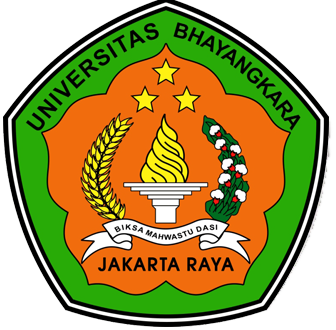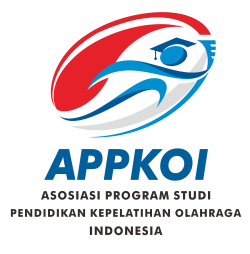Analysis of Cardiorespiratory Endurance Levels of High School Futsal Teams
DOI:
https://doi.org/10.31599/gx33g722Keywords:
Endurance, Cardiorespiration, Futsal, StudentsAbstract
This study aims to find out how good the cardiorespiratory endurance level of the SMA Negeri 22 Makassar futsal team is. This research is a quantitative descriptive research, the test technique used to collect data is the Multistage Fitness Test. The population in this study was 25 futsal team players at SMA Negeri 22 Makassar, the sample to determine the population used purposive sampling. The data analysis technique used is descriptive statistics in the form of percentages. The prevalence of "fair" (moderate) fitness levels among players under the age of 18 in the futsal team of SMA Negeri 22 Makassar indicates the need for a targeted training program to improve their cardiorespiratory endurance. With 62.5% of respondents falling into this category, this shows the potential to increase their fitness levels to achieve better performance on the field. Identifying factors contributing to lower fitness levels among the 37.5% of players categorized as “poor” (poor) may provide valuable insight for developing personalized training interventions and plans to meet their specific needs. By addressing these fitness gaps, teams can potentially improve their overall performance and competitiveness in futsal tournaments. A sufficient level of cardiorespiratory endurance is important in the sport of futsal, which involves fast movements, sudden changes in direction, and high intensity. By having a sufficient level of cardiorespiratory endurance, SMA Negeri 22 Makassar futsal players can maintain their performance during matches, reduce fatigue and minimize the risk of injury.
Downloads
References
Arikunto. (2013). Prosedur Penelitian Suatu Pendekatan Praktik. PT. Rineka Cipta.
Azwar, S. (2016). Metode Penelitian. Pustaka Pelajar.
Chandryani, P. M., Yunus, M., & Merawati, D. (2021). Hubungan tingkat kesegaran jasmani dengan kemampuan motorik kasar anakusia 7 tahun siswa sekolah dasar. Prosiding Seminar Nasional Ilmu Keolahragaan, 1(1),
Fatoni, R. A., Suroto, S., & Indahwati, N. (2021). Pengaruh aktivitas fisik program gross motor skill terhadap indeks massa tubuh dan tingkat kebugaran jasmani. Multilateral : Jurnal Pendidikan Jasmani dan Olahraga, 20(1), https://doi.org/10.20527/multilatera l.v20i1.9539
Franji & Abady, A. N. (2022). Kajian Kebugaran Jasmani Aspek Daya Tahan Kardiovaskular Pada Ekstrakurikuler Futsal. Jurnal Bina Pengabdian Kepada Masyarakat, 2(2), 77–89. https://doi.org/10.55081/jbpkm.v2i 2.562
Gómez, M. A., Méndez, C., Indaburu, A., & Travassos, B. (2019). Goal effectiveness after players’ dismissals in professional futsal teams. Journal of Sports Sciences, 37(8), 857–863.https://doi.org/10.1080/02640414.2018.1531498
Hadi, S. (2017). Pemeriksaan Keabsahan Data Penelitian Kualitatif Pada Skripsi. Jurnal Ilmu Pendidikan, 22(1). https://doi.org/10.17977/jip.v22i1.8 721
Iriawan, A. (2015). Pengaruh Latihan Small Sided Games Terhadap Peningkatan Vo2max Pada Siswa Ssb Garuda Tegalwangi [Other, Universitas Pendidikan Indonesia]. https://doi.org/10/S_KOR_100050 4_Appendix2.pdf
MacKenzie, B. (2005). 101 Performance Evaluation Tests. Electric Word plc. MADJID, I. (2017). Tingkat Kesegaran Jasmani Siswa Peserta Ektrakurikuler Futsal Sma Negeri 1 Karanganom [Skripsi, Fakultas Ilmu Keolahragaan]. https://eprints.uny.ac.id/53867/
Nurfadhila, R. (2016). Pengaruh latihan imagery dan koordinasi terhadap keterampilan forehand drive petenis pemula. Jurnal Keolahragaan, 4(2), Article 2. https://doi.org/10.21831/jk.v4i2.10 898
Prasetyo, M. A., & Winarno, M. E. (2019). Hubungan Status Gizi Dan Aktivitas Fisik Dengan Tingkat Kebugaran Jasmani Pada Siswa SMP. Sport Science and Health, 1(3).
Prasojo, D. A., Junaidi, S., & Hidayah, T. (2015). Profil Kebugaran Jasmani Pemain Futsal Smk Bagimu Negeriku Semarang Tahun 2014. Journal of Sport Science and Fitness, 4(1). https://doi.org/10.15294/jssf.v4i1.6 272
Ratnasari, A. M. (2018). Tingkat Daya Tahan Kardiorespirasi Atlet Judo Di Wira Mataram Judo Club Kabupaten Bantul Daerah Istimewa Yogyakarta. Universitas Negeri Yogyakarta.
SAKIR, M. (2019). Analisis Tingkat Kesegaran Jasmani Terhadap Hasil Belajar Penjas Siswa Sman 1 Takalar Analisis Of The Level Of Physical Fitness Of Physical Education Learning Outcomes Of The Students Of Sman 1 Takalar. http://eprints.unm.ac.id/15336/
Sambora, G. R. (2021). Pengaruh Daya Tahan (Vo2max) Terhadap Permainan Futsal Pemain Blitar Poetra Futsal Club Di Kabupaten Blitar). Jurnal Prestasi Olahraga, 4(2), 68–72.
Sugiyono. (2015). Metode penelitian pendidikan: Pendekatan kuantitatif, kualitatif, dan R&D. Alfabeta.
Sugiyono. (2018). Metode penelitian kuantitatif. Alfabeta.
Suryadi, D., & Rubiyatno, R. (2022). Kebugaran jasmani pada siswa yang mengikuti ekstrakulikuler futsal. Jurnal Ilmu Keolahragaan, 5(1). https://doi.org/10.26418/jilo.v5i1.5 1718
Warsono, O. D. Y. H., Widodo, S., & Kumaidah, E. (2017). Perbandingan Nilai V o2max Dan Denyut Nadi Latihan Pada Pemain Futsal Dengan Pemain Sepak Bola (Studi Pada Unit Kegiatan Mahasiswa Universitas Diponegoro). Jurnal Kedokteran Diponegoro (Diponegoro Medical Journal), 6(2). https://doi.org/10.14710/dmj.v6i2.1 8611
Widoyoko, E. P. (2016). Teknik Penyusunan Instrumen Penelitian. Universitas Muhammadiyah Metro. Wirajaya, I. M. A., Sena, I. G. A., & Vitalistyawati, L. P. A. (2022). Ketahanan Kebugaran Fisik Terhadap Daya Tahan Kardiorespirasi Pada Pemain Futsal Klub Futsal Sibang Kaja. Journal of Innovation Research and Knowledge, 2(4).
Downloads
Published
Issue
Section
License
Copyright (c) 2023 M. Said Zainuddin, Slamet Riyadi, Ahmad Zakaria

This work is licensed under a Creative Commons Attribution 4.0 International License.






.png)







